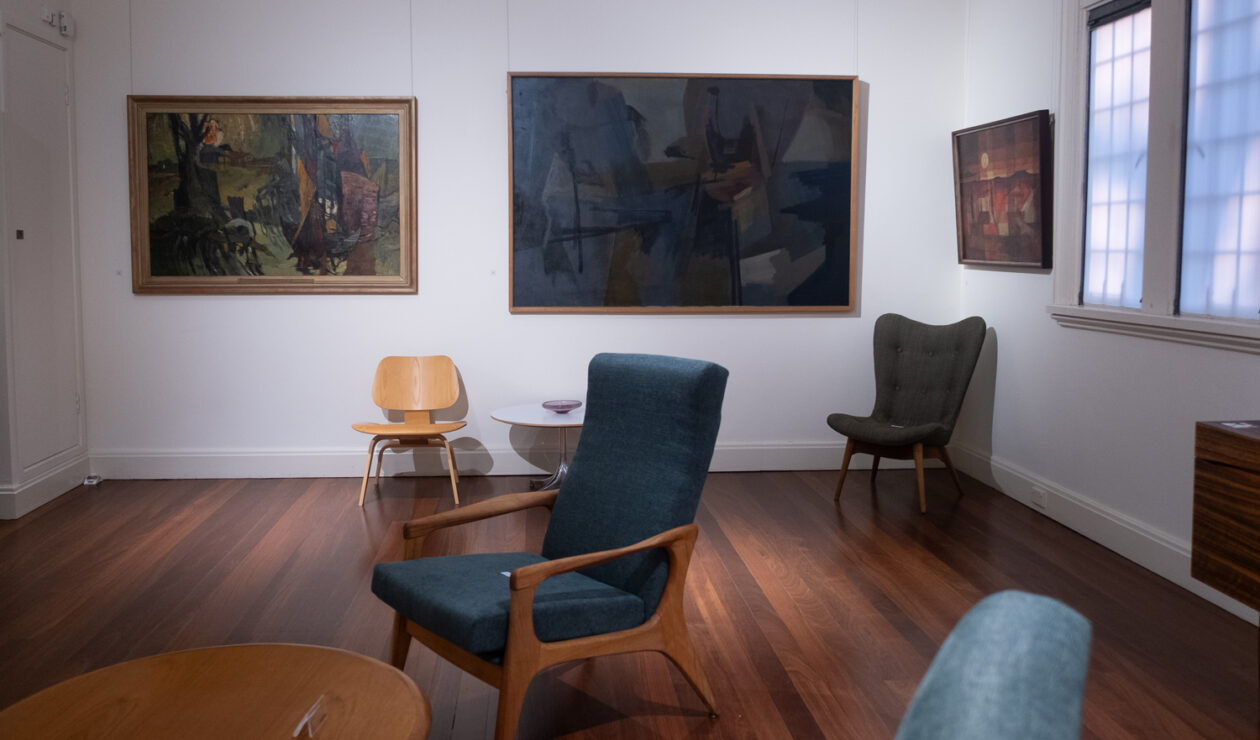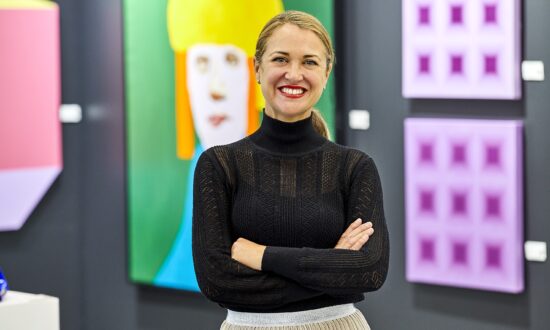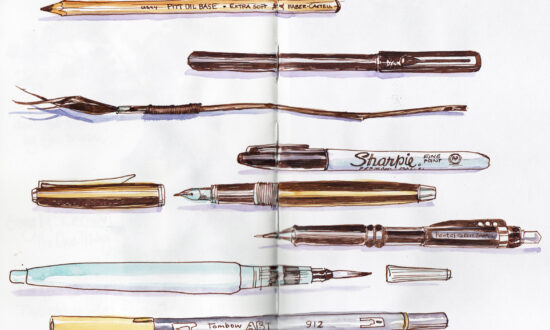Adelaide Mid-Century Moderns: Émigrés, Mavericks and Progressives
Carrick Hill
Adelaide, in the modern era, has had its share of “art changes society” narratives – none more polished than the “Dunstan Decade” of the late ’60s–’70s, held up as an example of how with government investment, the arts flourish and maintain this city’s reputation as Australia’s cultural capital. Stirring stuff.
But as Carrick’s current exhibition, Adelaide Mid-Century Moderns, reminds, no eras just happen. Visionary politicians, hard-working bureaucrats, progressive policies and other factors drive the agenda.
Moderns offers another reminder – that without exceptional artists and art, significant change or achievement is not possible.
The 25 artists represented in this exhibition, curated by Margot Osborne, are not an exhaustive listing of the primary movers and shakers of the ’50s and ’60s decades. But shrewd curatorial oversight delivers a coherent viewing experience which captures the ebullient spirit of the times and a sense of emerging self-confidence.
To better appreciate the trend to abstraction evident in the exhibition, some back-story is useful. In the immediate post-war period, the Adelaide art scene was riven by factionalism, with the conservatives associated with the two powerbrokers of the immediate post-war period – the Art Gallery of South Australia and the Royal South Australia Society of Arts – facing off with a restive brat-pack, later known as the Adelaide Angries, a title created in association with a 1989 Art Gallery of South Australia exhibition, curated by Jane Hylton.
The AGSA exhibition surveyed 1940–1950 work primarily by young up-to-date artists, including Douglas Roberts, Jacqueline Hick, David Dallwitz, Jeffrey Smart and Ivor Francis. The mood was angry, a reaction to the social and cultural conservatism of Adelaide of the day.
This was challenged in the ’50s as the local art scene was invigorated by the post-war arrival of émigré European artists, including Wladyslaw and Ludwik Dutkiewicz and Stan Ostoja-Kotkowski, who worked in abstract or semi-abstract modes.
Two works by Wladyslaw Dutkiewicz in Moderns exemplify a diversity of practice: Calligraphy, a visual conversation between expressionist gestures and looping lines, and Water Holes, with its earth colours expressing a sense of engagement with Australian semi-arid landscapes.
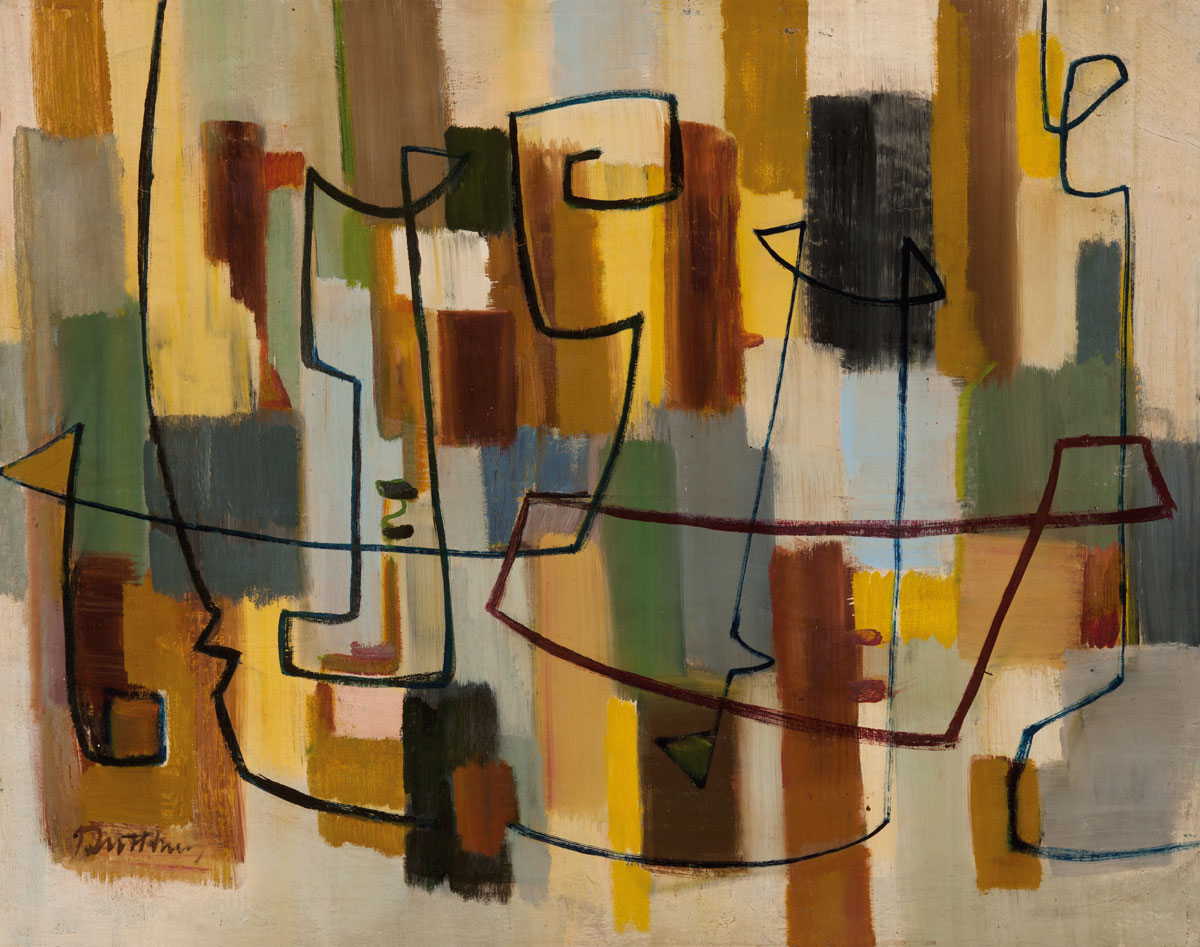
Wladyslaw Dutkiewicz, Calligraphy, c 1952, Adelaide, oil on canvas, 68 x 87cm. Gift of the Dutkiewicz family, Art Gallery of SA. © courtesy estate of the artist
Landscape context seems to be a common bond between Wladyslaw and some established artists, particularly Hick, Francis Roy Thompson and James Cant. Lawrence Daws’ rendition of Alcheringa, however, shows a younger Adelaide artist adopting a European modernist mode of the grid to translate an inland landscape into symbolic form.
Osborne’s division of the exhibition into modules (1950s modernism; Abstract expressionism and collage – early 1960s; Printmaking; Late sixties post-painterly abstraction; Mid-Century modern furniture, plus a 1950s film program (catch Ostoja-Kotkowski’s Felliniesque take on Adelaide design cool) signposts the crosscurrents of a rapidly evolving ’60s Adelaide art scene.
The association of works by John Baily, Lynn Collins and Charles Reddington identifies a significant transitional period in which semi-abstract, sometimes figurative painting with biomorphic characteristics offered a way forward.
The influence of South Australian School of Art pedagogies and personalities, combined with routines of international cultural browsing through travel, travelling exhibitions and art publications, normalised experimental practice with particular focus on colour and design-based expression. Tactile, collage surfaces associated with pop-influenced painting, as seen in Collins’ White Painting and Baily’s nuke-bomb-like Winter solstice, sit at variance with the post-painterly artists’ commitment to flat, design-centric colouration, variously known as hard edge, colour field abstraction or post-painterly abstraction.

An installation view of Adelaide Mid-Century Moderns, including (centre) Robert Boynes’ Eternal roll-up, 1969. Photo: Luke Simon Photography / supplied
Encountering the dazzling geometrics and high chromatics of John Dallwitz, Barrie Goddard, Ian Chandler, Bob Boynes, Dora Chapman and Ostoja-Kotkowski, viewers are entitled to feel that a break from the past had really been made and the “Dusty Decades” of Australia’s mid-war period and its aftermath consigned to history.
The selection of prints which include works by Barbara Hanrahan, Geoff Wilson and Udo Sellbach is a reminder that Adelaide printmaking really muscled up in the ’60s and set up the powerhouse agit-prop print movements of the ’70s. An early Hanrahan print (Beauty and Bob, 1964) reflects the powerful influence London pop culture of the day had on a number of Adelaide-based artists. Her Buddy Holly and the mods and rockers deserves a PhD.
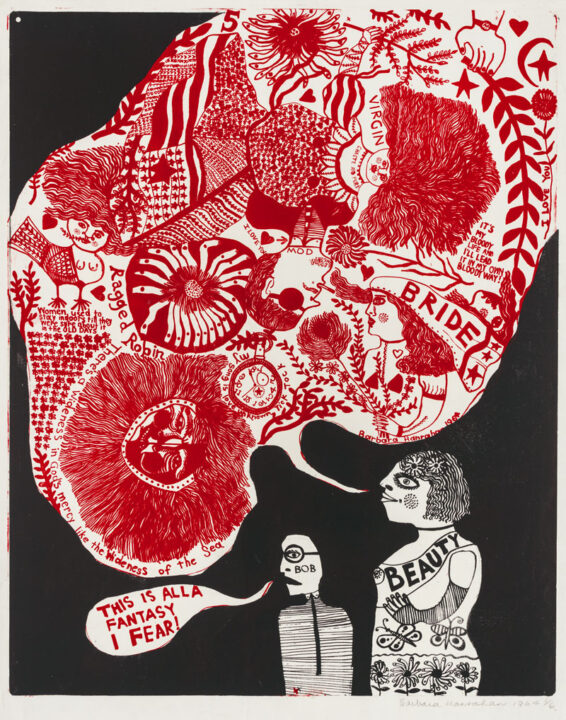
Barbara Hanrahan, Beauty and Bob, 1964, lithograph printed in red & black inks on paper. Gift of Jo Steele 1996, Art Gallery of SA. © estate of the artist
AGSA curator Tracey Lock, opening the exhibition, identified this mid-century fluorescence as a kind of speed dating with America. The prevailing sense of playfulness and optimism was, Lock said, “Australia’s American moment”.
By the late ’60s, the energy was spent, outrunning its dwindling audience to the point of exhaustion. How cheeky of Osborne, with the blessing of Carrick Hill and major lender the Art Gallery of South Australia, to lodge this ebullient cuckoo in the bosom of a period-mashup, oak-panelled house museum.
Confirming the subversion is a brace of mid-20th-century modern furniture, selected by Georgina Downey. Hardly a stitch of upholstery to be seen. Definitely non-Hayward. In this context, Adelaide Mid-Century Moderns is a glimpse of an era when to be a young (or not so young) artist in Adelaide was very cool.
And there’s more. The exhibition is part of a larger collaboration between Carrick Hill and supporting partners – a major Wakefield Press publication, The Adelaide Art Scene: Becoming contemporary 1939–2000, to be launched later this year. Hopefully, this ambitious undertaking will be the catalyst for a long overdue major survey exhibition of such a significant era, when South Australian art opened up to modern world. We must tell our own stories.

Get InReview in your inbox – free each Saturday. Local arts and culture – covered.
Thanks for signing up to the InReview newsletter.
Adelaide Mid-Century Moderns: Émigrés, Mavericks and Progressives is showing at Carrick Hill until October 15 as part of the 2023 SALA Festival. An associated events program includes and in-conversation event on August 18 with artist John Dallwitz and AGSA associate curator of prints, drawings and photographs Maria Zagala; a talk by Margot Osborne on August 23 about mid-century modernism in Adelaide, and a talk by Georgina Downey on September 13 about creative collaborations between young architects and émigré artists.
Read more SALA articles here.
Support local arts journalism
Your support will help us continue the important work of InReview in publishing free professional journalism that celebrates, interrogates and amplifies arts and culture in South Australia.
Donate Here
